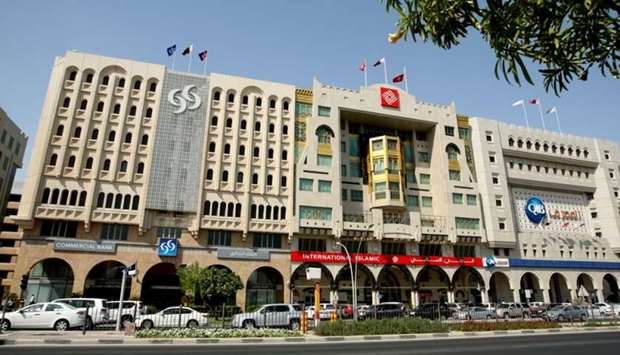Qatar's banking industry has shown higher resilience than the other countries and it can further mitigate risks and position itself for the emerging opportunities in this volatile period, according to PricewaterhouseCoopers (PwC), a global consultant.
However, the sector needs to pay attention to digital transformation and financial inclusion as well as address credit, profit and operational risks in the mid-term, PwC said in its report.
The aggregated profits of the eight listed commercial banks declined 1% year-on-year at the end of first quarter (Q1) ended March 31, 2020, which resulted from increased expenses mainly driven by a short-term raise of net impairment losses on loans and advances to customers.
However, considering a three-year period, the aggregated profits of the eight listed commercial banks showed sharp growth and resilience, increasing by 15.3% as on March 31 2020 compared to Q1, 2017, it said.
“Going forward, banks in Qatar can further mitigate risks and position themselves for emerging opportunities during this volatile period,” it said, adding the banking sector seemed to have already responded with appropriate measures.
Finding that Q1 2020 already manifested a "significant impact" of the international volatility and its ramification on the banking industry; it said, however, Qatar's banking sector has experienced higher resilience than other countries, proving that the joint co-ordination of all the stakeholders from public authorities as well as public and private institutions has contributed to ensure stability among financial institutions.
PwC has identified five primary areas of attention for banks in Qatar for mid-term and it includes digital transformation and financial inclusion, driven by new regulations; credit risk, due to deteriorating credit conditions; capital and liquidity levels for ensuring risk mitigation; income and profit risk; and operational risks.
Qatari banks have experienced growth in total assets and total loans and advances over the first quarter of 2020 (Q1 2020 versus financial year 2019) despite the volatility of the last quarter, as demonstrated by the (consolidated) reports published by the eight listed commercial banks.
Growth of the aggregated assets accelerated in Q1 2020 by 1.8% compared with FY 2019, by 8.6% against Q1 2019, and by 7% compounded annual growth (CAGR) over the three-year period (Q1 2020 versus Q1 2017).
The growth dynamics in the aggregated total loans and advances of the eight listed banks have also been "positive", it said, highlighting that in the last three years, total loans and advances grew 23.7% (CAGR of 7.3%), proving that the banking industry in Qatar has been expanding at a "rapid pace" over the last three years.
Customer deposits grew by a total of 7.4% over the last years (versus Q1 2019), by a three-year CAGR of 6.5% (Q1 2020 versus Q1 2017) and by 2.5% in the last quarter (versus FY 2019) on aggregate.
"By and large, the overall trend of key performance indicators (KPIs) for the eight listed banks throughout the last three years remained positive, showing double-digit growth for the main KPIs," PwC said.


